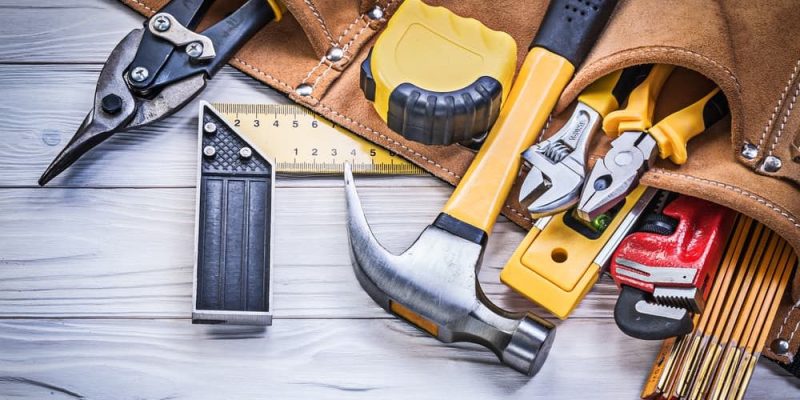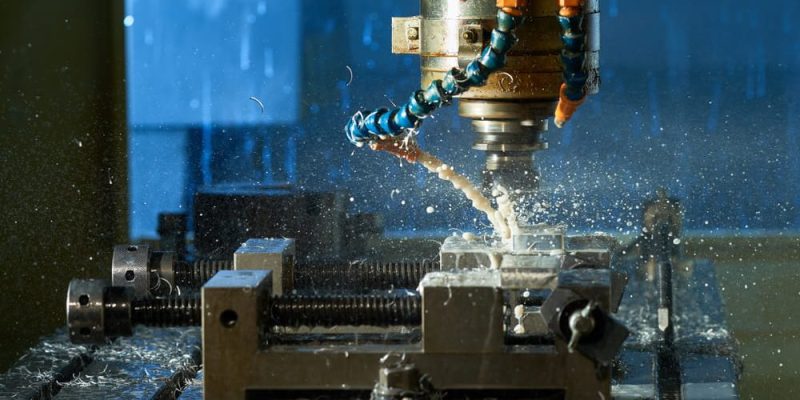We explain what a tool is, its types, history and characteristics. Also, differences with a machine.

What is a tool?
We commonly call tools to certain artifacts that serve to carry out certain jobs with greater ease, precision or intensity mechanical, for which they require the application of certain levels of physical force on our part.
These are elaborate utensils that constitute an extension or complement of our body. That is, a tool is an instrument that maximizes our natural capabilities and allows us to perform certain tasks in a better way.
Thus, where the human hand cannot drive the nail into the wood (or cannot do so without hurting itself in the process), the hammer performs the task perfectly; or where the screw no longer tightens between the fingers, the screwdriver allows it to be tightened to the desired point.
The word tool comes from Latin ferramenta (“tools”), a word used to generally refer to all types of utensils and which is composed of two words: ferrum (“iron”) and the suffix mentum (“instrument”), since the discovery of the handling of this metal was what allowed the manufacture of new and powerful utensils in Antiquity.
However, the current concept of a tool extends beyond metal utensils, and even beyond those used for manual labor. Nowadays It is possible to refer to pieces of software with that name as well (such as spreadsheets or word processors), as long as they have a practical use and make our work easier.
Tool Features
Broadly speaking, the tools have the following characteristics:
- are human artifacts that is, they must have been manufactured by humanity in order to be used. This is true even for the most primitive tools, made of stone, as they had to be sharpened and trimmed in order to be used.
- Its mission is to facilitate human labor which they do by taking advantage of an initial push of physical force that they maximize or transform into another type of energy. The more complex and developed the tool, the less initial physical force required from the user.
- The tools are essential for the vast majority of trades and jobs and in some cases they are designed exclusively for them. Thus, workers usually use certain tools, shoemakers others, artisans others, etc.
- They are generally made of metals and other materials of great hardness and resistance.
History of tools

The history of tools is as old as humanity itself. In fact, its manufacturing It is one of the first signs of our appearance on the face of the Earth although we were not exactly the Homo sapiensbut other ancestral human species that lived about 3 million years ago.
The first tools that appeared were lithic tools that is, made of stone or, at most, solid animal bones. Its probable first uses were separating meat from the bone of prey, grinding plant fibers, or crushing bones left behind by large predators to access the nutrient-rich marrow.
Later, these same tools allowed the appearance of stone weapons: axes, spears and other instruments of attack and defense, also useful for hunting wild animals.
These primitive tools were carved from rocks such as flint or obsidian. They were beaten and molded with other harder minerals, and combined with wood and fibers.
These materials They were later replaced in many ancient cultures by metal once the art of forging and steelmaking was known, to obtain more versatile and complex tools from copper, bronze and finally iron.
The impact of these metals on the making of human tools was such that prehistory is traditionally studied based on their appearance in different cultures: the Stone Age, the Bronze Age, the Iron Age, etc.
Types of tools
Tools, roughly speaking, can be classified into three types: manual, mechanical and technological.
- hand tools They are those that use the physical strength of the human body as a starting point, increasing or focusing it so that tasks that require a lot of effort are carried out more easily. Hammers (the human arm must deliver the blow), screwdrivers (the human hand must induce the rotation) or knives (the human arm must conduct the cutting) are a perfect example of this.
- mechanical tools On the other hand, they are those that use an external energy source as a starting point, and convert said energy into work, either in combination with a certain degree of human physical effort, or without it. For example, a hydraulic hammer uses electricity to crush cement, but still requires a person to hold and direct it; and a blowtorch burns and melts materials thanks to the combustion of certain flammable chemicals, but human strength must aim and sustain it.
- The technological tools Finally, they have a higher degree of complexity that allows them a higher level of automation, partially freeing the human body from its participation in tasks. For example, the applications that we install on our phone and allow us to comfortably carry out tasks such as photographing, scanning documents, timing, etc.
In addition to this classification, tools can also be classified according to the specific function they perform, as follows:
- Assembly tools which are used to assemble (or disassemble) furniture, parts or devices, such as screwdrivers or keys.
- Fastening tools which serve to hold pieces or materials and thus allow safer handling (for the hands) or give them greater strength. Examples of this are tweezers and pliers.
- striking tools which serve as their name indicates to print force on a surface, maximizing the impact that the human hand could have. Examples of this are the hammer and the pickaxe.
- cutting tools which are used to separate or cut materials, such as scissors, knives or saws.
- Joining tools which are used to join pieces or materials that are difficult to fit together, as blowtorches or silicone guns do, for example.
- Measuring or plotting tools which are used to precisely measure and compare surfaces or compare magnitudes with others. This is the case of compasses, measuring tapes and squares.
Differences between machine and tool

The difference between tools and machines may not be so clear, especially if we consider the rapid advance of technology since the 20th century. However, this distinction is largely based on the fact of automation.
That is to say, A machine is an automated tool that does not require the intervention of the user's body (or requires very little intervention) to perform its tasks, as the tools do require to varying degrees.
In addition, machines have a higher degree of complexity, since they usually involve components of a different nature, and have an immensely higher work capacity. In general, the tools are used to repair or maintain machines, and at the same time it is the machines that allow any type of tools to be mass-produced.
Continue with: Lever
References
- “Tool” in Wikipedia.
- “Tool” in the Language Dictionary of the Royal Spanish Academy.
- “Etymology of Tool” in the Online Spanish Etymological Dictionary.
- “Machines and tools. Didactic guide” by Luis Schvab at the National Institute of Technological Education (Argentina).





